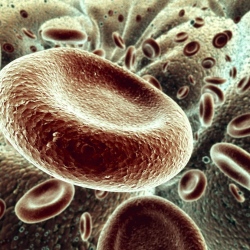
This week, at the International Solid-State Circuits Conference, before an audience of her peers, Ada Poon demonstrated a tiny, wirelessly powered, self-propelled medical device capable of controlled motion through a fluid – blood, to be exact. The era of swallow-the-surgeon medical care may no longer be the stuff of science fiction.
Poon, an assistant professor of electrical engineering, is developing a new class of medical devices that can be implanted or injected into the human body and powered wirelessly using electromagnetic radio waves. No batteries to wear out. No cables to provide power.
Poon’s devices consist of a radio transmitter outside the body sending signals inside the body to an independent device that picks up the signal with an antenna of coiled wire. The transmitter and the antennae are magnetically coupled such that any change in current flow in the transmitter produces a voltage in the other wire – or, more accurately, it induces a voltage. The power is transferred wirelessly. It can be used to run electronics on the device and propel it through the bloodstream.
Poon took a different tack, choosing instead to model tissue as a dielectric – a type of insulator. As it turns out, human tissue is a poor conductor of electricity. But radio waves can still move through tissue. In a dielectric, the signal is conveyed as waves of shifting polarization of atoms within cells. Even better, Poon also discovered that human tissue is a "low-loss" dielectric; that is, little of the signal gets lost along the way.
She recalculated using a different set of equations and made a surprising discovery: radio waves travel much farther in human tissue than originally thought.
"When we extended things to higher frequencies using a simple model of tissue, we realized that the optimal frequency for wireless powering is actually around one gigahertz," said Poon, "about 100 times higher than previously thought."
More significantly, however, her revelation meant that antennae inside the body could be 100 times smaller and yet deliver the power needed by the medical device.
Poon was not so much in search of a new technology; she was in search of a new math. The antenna on the device Poon demonstrated at the conference is just 2 millimeters square, small enough to travel through the bloodstream.
She has developed two types of self-propelled devices. One drives electrical current directly through the fluid to create a directional force that pushes the device forward. This type of device is capable of moving at just over half-a-centimeter per second. The second type switches current back-and-forth through a wire loop to produce a swishing motion similar to the motion a kayaker makes to paddle upstream.
"There is considerable room for improvement and much work remains before such devices are ready for medical applications," said Poon. "But for the first time in decades the possibility seems closer than ever."
